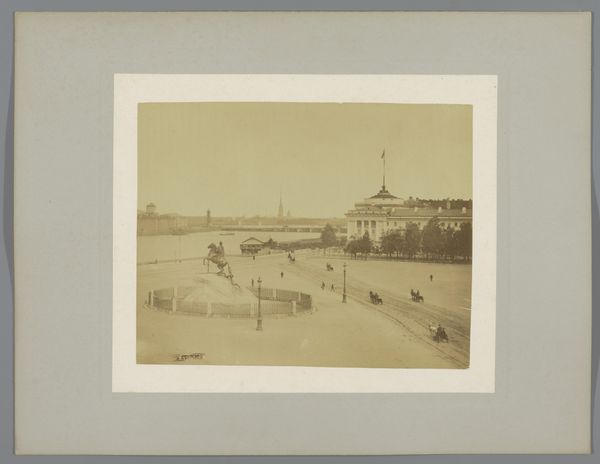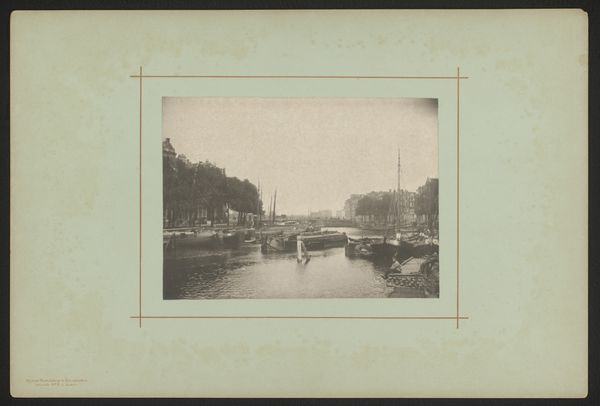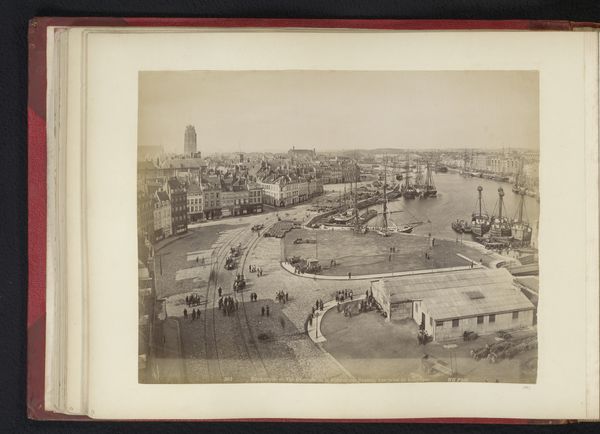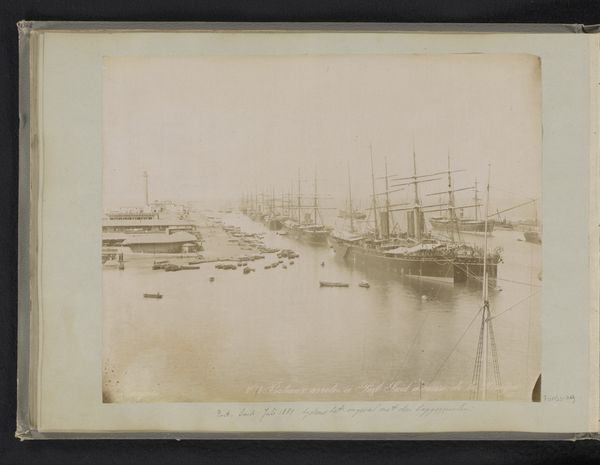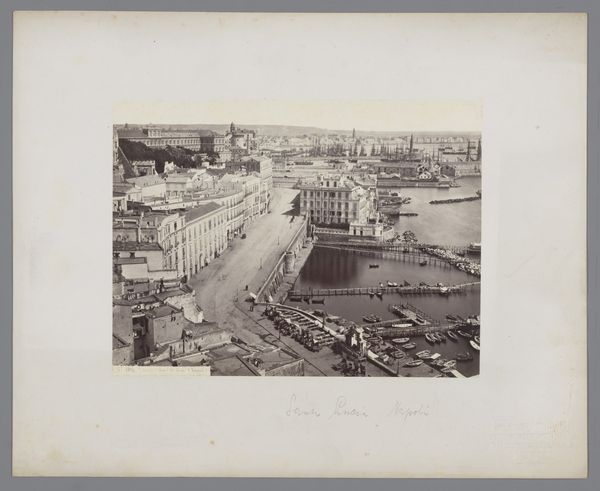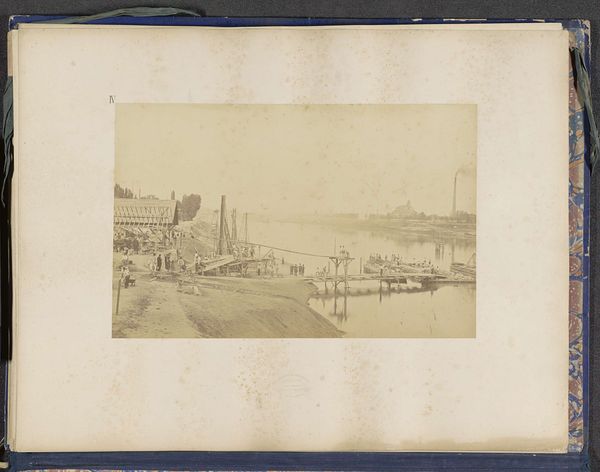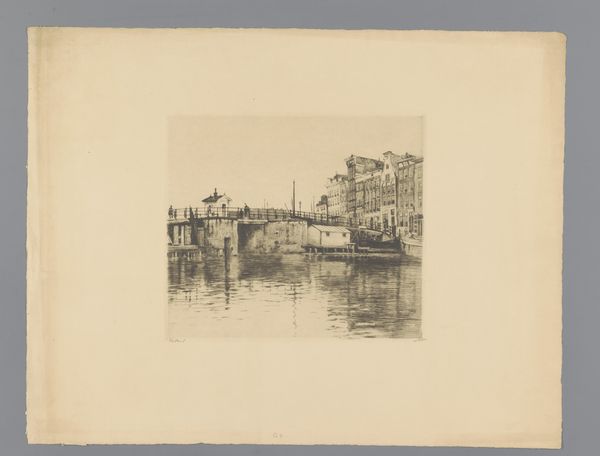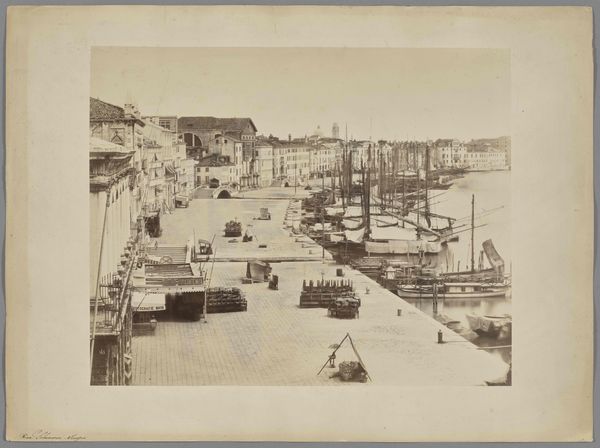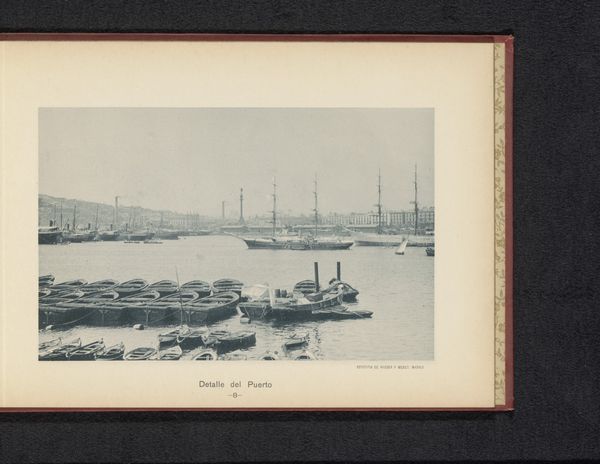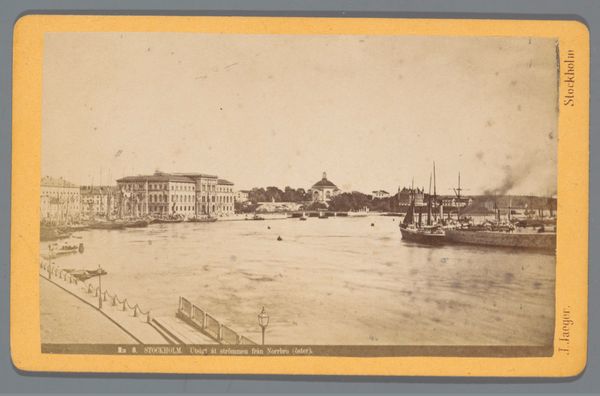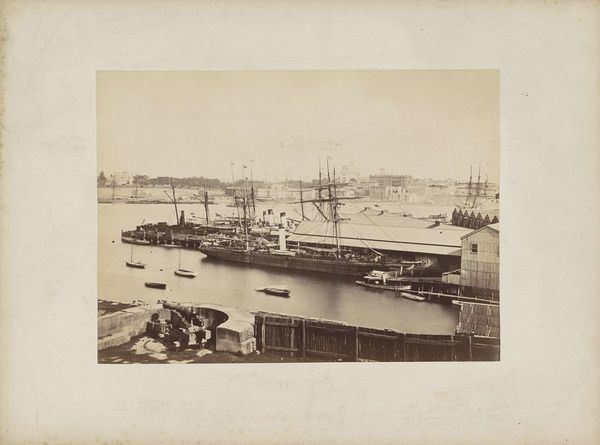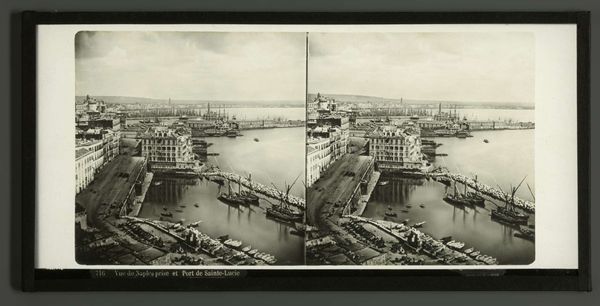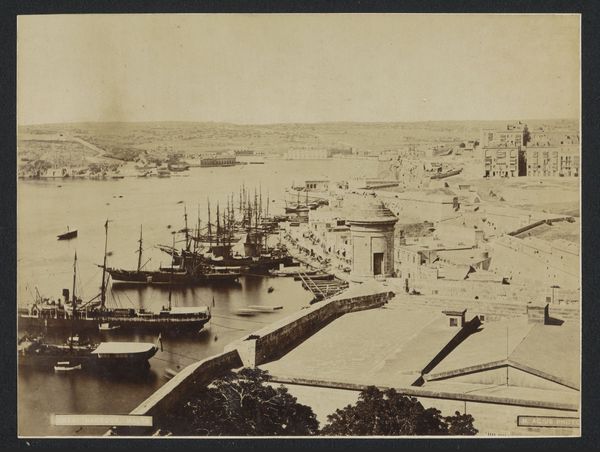
print, photography
#
pictorialism
# print
#
landscape
#
photography
#
cityscape
#
realism
Dimensions: height 225 mm, width 283 mm, height 350 mm, width 455 mm
Copyright: Rijks Museum: Open Domain
Curator: The atmosphere in this print, "Gezicht op de haven van Kopenhagen," made sometime between 1880 and 1910, is wonderfully evocative. The sepia tones lend it a soft, almost dreamlike quality, despite its realistic depiction of the harbor. Editor: Dreamlike, perhaps, but there’s a palpable stillness too. Looking at this, I'm drawn to considering who had the privilege to enjoy the harbor during this time? Which social classes and bodies were afforded leisurely enjoyment versus those involved in the labor it portrays? Curator: That's a sharp question. And consider the photographer, also anonymous, as the materials used here – the print itself – likely point to a middle-class practice and consumption. It makes one think about the accessibility of art creation and ownership then and even now. Editor: Absolutely. This vista of ships, bustling docks, and promenading figures provides layers of narratives. It speaks volumes about commerce and the everyday life of the people tied to the city and its harbor—the economy, the transportation of goods. Where did they come from and where are they going? Who profits? Curator: Indeed. And observe how the eye is led by the careful composition—from the promenade down to the working docks, emphasizing that tangible connection between labor and leisure. One can almost trace the distribution networks and processes within the image itself. Editor: The scale feels important too. Seeing so many people clustered around suggests bustling activity. It suggests the way harbor scenes would shape Copenhagen’s identity. The photographic style evokes not just nostalgia, but hints at socio-economic disparities of an expanding industrial society—workers versus observers. Curator: Thinking of the processes used for its creation, from lens to chemicals and paper, offers tangible ways of grounding pictorialism into daily material conditions, no? Editor: Definitely. This image is less about aesthetic beauty, more about using realism to raise awareness. That sense of documentary holds a significant weight of social commentary from its moment. Curator: Precisely. And by questioning its materiality, processes, and the social strata it subtly represents, we have highlighted the complexities embedded in an image that initially appears to be a serene landscape. Editor: Hopefully, such interrogation of the photograph sparks critical reflection about power structures captured not only in the past, but their implications and how it continues in the present too.
Comments
No comments
Be the first to comment and join the conversation on the ultimate creative platform.
